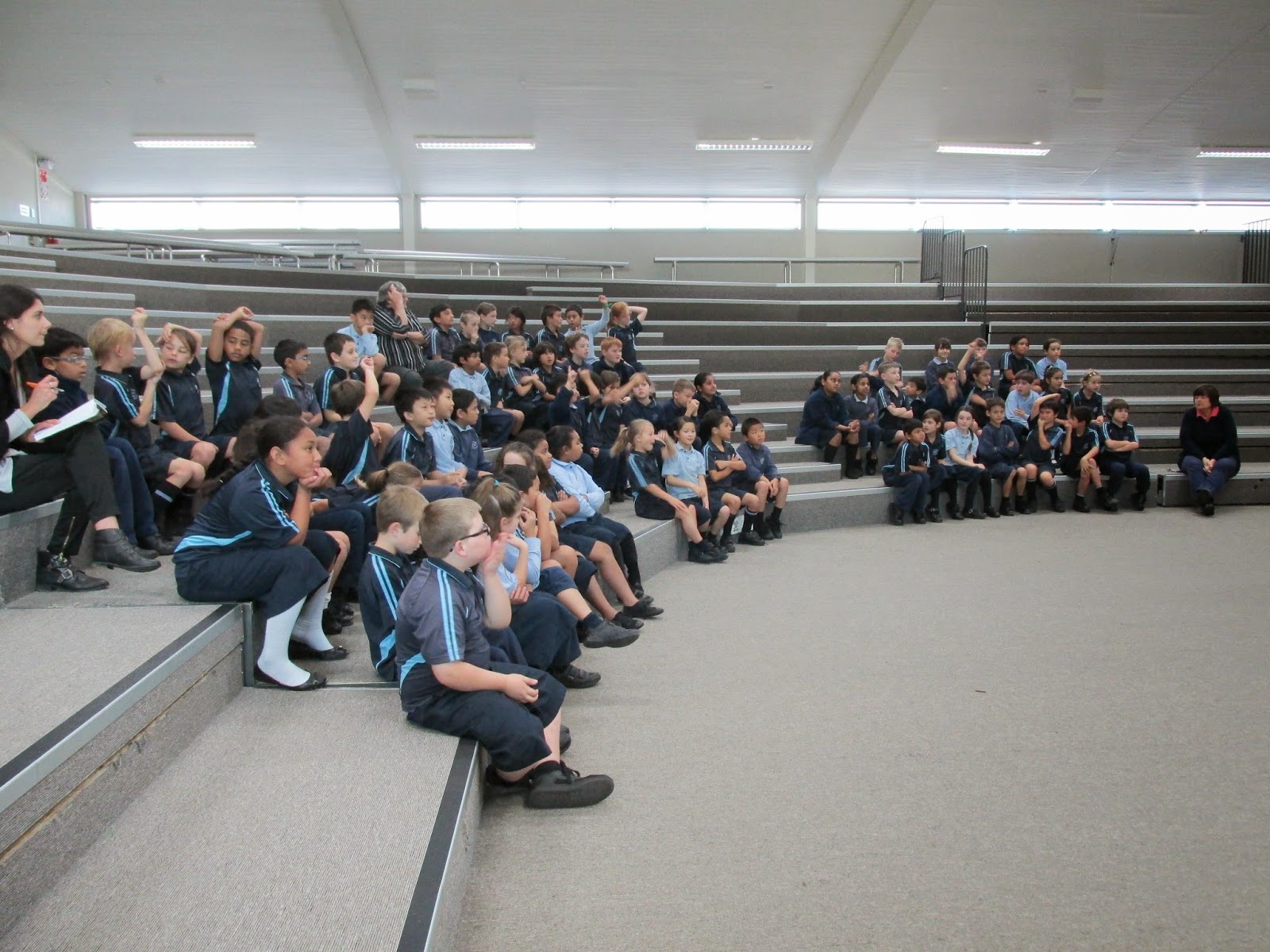Anna Baine works for the Auckland City Council.
 |
| Ms Baine talking to us today |
 |
| Yr 4 students asking questions... |
Ms Baine works in our community to help people take care of their neighbourhoods in lots of ways:
- helping people to plant native trees so that we encourage native birds
- teaching people all about animals that have become pests since they were introduced into New Zealand
- teaching people about ways we can work out what pest animals are in our neighbourhood
- recommending ways to get rid of unwanted pest animals
Look at some of the awful animal pests that we now have in New Zealand...
 |
| Stoat (one of the animals in the mustelid family) |
 |
Possum
Many pests were introduced into New Zealand for their fur. But once the animals were here and were released into the wild their numbers exploded and we had a terrible problem.
|
We also learned that:
- we now have 70 million possums in New Zealand
- possums eat native trees and this affects our native birds
- possums also eat native birds' eggs and baby chicks
- they can give tuberculosis (TB) to cattle on farms near the bush
Ms Baine told us how we can get rid of unwanted animal pests in New Zealand
- by trapping with special plastic traps
- by poisoning with 1080 poison
- by hunting
 |
| Ms Baine showing a trap |
 |
| Trap, poison trap, and monitoring tunnel called a tracker tunnel |
 We read all about the pest animals:
We read all about the pest animals:
- feral cats
- rats
- hedgehogs
- stoats
- weasels
- ferrets
- possums

At the end of the talk some children helped Ms Baine set 5 tracker tunnels on the Reserve and on our back field. Read the related blog post to see how pest animals are attracted to the tracker tunnels.
 |
| Ms Baine holding the ink pad that helps us know what pest animals we have in our area... |
We learned heaps today... Thank you Ms Baine. We will tell you what we find next week!






 We read all about the pest animals:
We read all about the pest animals:



